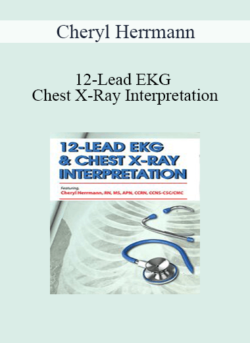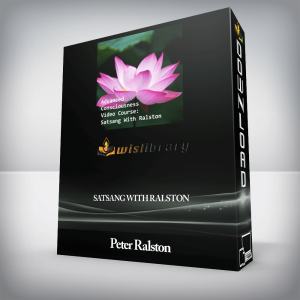You’ll gain customizable tools and strategies that build self-regulation and resilience, strengthen child and caregiver relationships, fill developmental gaps, and restore their capacity for curiosity, engagement and authentic response in the moment. Purchase Certificate Course: ARC Trauma Treatment for Children and Adolescents – Margaret E. Blaustein courses at here with PRICE $199.99 $84Attachment, Regulation, and Competency (ARC) ARC Trauma Treatment — a Transformative Approach to Changing Children’s Lives for Good…When kids are faced with overwhelming stress and childhood adversity day-after-day, they adapt to their environment. Their behavior and attention problems may prompt their arrival in treatment, but when you start to dig deeper, you find they are simply stuck in survival mode — the hallmark of complex developmental trauma.Where do you go from here?Co-developed by Dr. Margaret Blaustein, ARC is a framework that is clinically-proven to enhance trauma treatment with children and adolescents, and has been hailed as, “a landmark for understanding and treating traumatized children” by world renowned trauma expert, Dr. Bessel van der Kolk.Now, you can get a comprehensive training on ARC, created by ARC co-developer, Dr. Blaustein, through this online certificate course and revolutionize your trauma treatment approach.Enroll today and learn how to integrate ARC’s sequential, developmentally-appropriate framework to address trauma with both the child and caregiver system, and create a supportive environment for healthy development and healing of complex trauma.You’ll gain customizable tools and strategies that build self-regulation and resilience, strengthen child and caregiver relationships, fill developmental gaps, and restore their capacity for curiosity, engagement and authentic response in the moment.Session 1: Introduction to ARC — A Comprehensive Approach to Trauma Treatment for Kids and CaregiversThe ultimate-goal of ARC is healing complex trauma in a way that helps kids authentically engage in their lives in the present moment. It begins with the open-ended question — What about this child’s behavior makes sense? From that point forward, the ARC framework supports the goal of Trauma Experience Integration (TEI) — the progressive development of a child’s capacity to tolerate moments of distress, make meaning about those experiences, and integrate them in a way that positively informs present experience. This session introduces you to the building blocks of the ARC framework and their purpose in the context of treating children with a history of complex trauma. You’ll explore:The multi-layered nature of complex trauma in children and adolescents — an ongoing combination of abuse, neglect, loss, betrayal, and interference with normal developmental tasksThe many presentations of complex trauma in children, how to recognize them, and the best ways to begin treatmentAttachment, regulation and competency — the core domains for ARC’s progressive approach to healing trauma and why they matterHow to strengthen the child’s environment and engage caregivers in support of healing and healthy child developmentThe healing power of acknowledging a child’s survival strategies as “strengths” and re-focusing them on meaningful goal-oriented activities in the presentSession 2: Engagement, Education, Rhythm and Routine — ARC’s Unifying Strategies, How to Use Them and When All healing progress requires engagement — that’s a core principle of ARC’s approach. And successful engagement requires awareness, pacing, and attunement to the client’s state. This session will enhance your understanding of how to intervene effectively when the client is triggered or in survival mode, recognize and tap into curiosity and reflection to make the most of readiness for present action. You’ll learn:Four key factors that ensure successful engagementProven engagement strategies for youth and their caregiversPractices for fine-tuning therapist attunementHow being curious about why, in addition to, what validates a child’s experience and emotion, de-stigmatizes behavior, and enhances engagement in the healing processHow to empower through education and information — a playbook for children and their caregiversHow to use routines and rhythms to support modulation and mastery — in therapy and at homeSession 3: Healing Wounds of Attachment — Key Strategies for Successfully Engaging Caregivers Attachment is the first pillar in the ARC attachment, regulation, competency framework. No one is better placed to strengthen attachment bonds than a primary caregiver. That’s why engaging a child’s caregiving system,—parents and professionals,—is a primary focus of ARC’s trauma treatment framework. Once engaged, caregivers can be supported in understanding a child’s triggers and reactions, managing their own emotional responses, and practicing self-care. You’ll learn how to:Recognize and address common barriers to engagement for caregiversNormalize caregiver responses and de-stigmatize youth behaviorsIncrease caregiver’s understanding of the neurobiology of reactivity and the danger response in traumatized youthHelp caregivers use a crisis as an opportunity for learning and growthEncourage the use of effective coping strategies and support systems for caregiver self-careModel and reinforce three key caregiver language skills — reflection, validation, and normalization Session 4: A Step-by-Step Guide to Enhancing Attunement It’s an ARC foundational principle that effective caregiver attunement is the key to youth self-regulation. But understanding a child’s difficult behaviors is seldom a straightforward proposition. Actions can mask unmet needs or unregulated affect and they can trigger an emotional response in others that further obscures what’s going on. This session zeroes in on everything you need to support primary caregivers and professionals in the effective practice of attunement to accurately and empathically understand and respond to a child’s actions, communications, needs, and feelings. It covers helping caregivers:Approach youth behavior with self-awareness and curiosityIdentify and respond to the underlying function of a specific youth behaviorCombine accurate perception with effective affect management and behavioral responseRecognize and create opportunities to build pleasure in engagementAttune with the whole self — matching the child’s energy, affect, tone, and paceCo-modulate by cuing, supporting, and reinforcing self-regulation strategies Session 5: Mastering Effective Response — the Key to Creating a Sense of Safety for Traumatized Children Safety is a baseline requirement for making progress with children and adolescents who have a history of complex trauma. And that sense of safety needs to extend beyond therapy to the home and the classroom. The goal on all fronts is responding to a child’s behavior in a way that is regulated, predictable, and sensitive to the influence past experiences have on a child’s current behaviors. In this session, you’ll learn:A teachable four-step planning process that helps ensure the likelihood of an effective caregiver response — even in challenging situationsHow to overcome the most common caregiver barriers to responding effectivelyCommon youth reactions that can undermine an effective response and strategies for neutralizing them proactivelyHow to coach caregivers through attunement gaps, affect management blind spots, and other common barriers to effective responseProactive strategies for avoiding power struggles between child and caregiverProven techniques for meeting a child’s underlying needs, while still addressing negative behaviorsSession 6: Regulation — the Ultimate Goal and an Ongoing Process for Traumatized Children Regulation — the second pillar in the ARC attachment, regulation, competency framework is, by its very nature, complicated. It requires the capacity to identify and access feelings, the resources to manage the experience on many levels — emotional, physiological, cognitive, and behavioral — and the language to talk about what’s unfolding. When there’s a history of complex trauma, a child’s journey to self-regulation is one of many small steps. The first include awareness, naming, and understanding the context of inner experiences. In this session, you’ll discover:How to assess a child’s tolerance for different states of arousal and identify current strategies for managing what they experienceA step-by-step process for helping children become aware of their own internal experiences — emotions, energy, or arousal — and using language to name what they feelTools and approaches to help children make connections between their emotions and other aspects of their experience, including thoughts, body sensations, and behaviorsStrategies that support children in exploring “what causes” feelings, identifying triggers, and understanding their body’s alarm systemSession 7: Modulation — the Second Milestone on the Road to Self-Regulation Once a child has achieved basic awareness of internal states, ARC shifts focus to strengthening the ability to discern changes in feeling and make qualitative assessments of internal states such as comfortable, dangerous, and tolerable. As therapist and child experiment with different activities and track effects, the child experiences a sense of agency and control. In this resource-rich session, you’ll discover:A wide range of modulating strategies to explore with children, including sensory experiences, gross motor activities, and dedicated spaces for quiet, comfort, and safetyHow to build a concrete “feelings toolbox” of strategies that cue a child to use specific coping skills to shift emotional statesA step-by-step process for engaging caregivers as active participants in support of a child’s increasing mastery of modulation strategiesThe most effective way to repair, reconnect, and reengage with a child after a meltdown or moment of crisisSession 8: Bringing the Process Home — Supporting Competency, Connection and the Ability to Act in the Present Moment How do you help children with a history of complex trauma build the skills and tolerance for sharing their internal experiences? How do you support their ability to connect effectively, to set goals, make active choices, and develop a resilient sense of self? All of these are possible as part of developing competency — the third pillar in the ARC attachment, regulation, competency framework. In this final session, you’ll learn:A step-by-step approach to building the foundation for healthy relationships — exploring the goals of connection, integrating connection with routine communications and check-ins, identifying resources, and facilitating the engagement of othersFour key activities that help strengthen a children’s reliance on their executive functionsHow and when to use structures that support active decision-making and to engage evaluation of choices through playHow to launch a comprehensive exploration of multiple “facets of identity” as part of building a child’s sense of unique self and personal identity Tag: Certificate Course: ARC Trauma Treatment for Children and Adolescents – Margaret E. Blaustein Review. Certificate Course: ARC Trauma Treatment for Children and Adolescents – Margaret E. Blaustein download. Certificate Course: ARC Trauma Treatment for Children and Adolescents – Margaret E. Blaustein discount. Purchase Certificate Course: ARC Trauma Treatment for Children and Adolescents – Margaret E. Blaustein courses at here with PRICE $199.99 $84

 Play Therapy: Attachment-Based Treatment Interventions for Trauma, Anxiety, OCD and More! – Tammi Van Hollander
₹13,944.00
Play Therapy: Attachment-Based Treatment Interventions for Trauma, Anxiety, OCD and More! – Tammi Van Hollander
₹13,944.00
 Cheryl Herrmann – 12-Lead EKG & Chest X-Ray Interpretation: Enhancing Assessment Skills for Improved Outcomes
₹6,806.00
Cheryl Herrmann – 12-Lead EKG & Chest X-Ray Interpretation: Enhancing Assessment Skills for Improved Outcomes
₹6,806.00
Certificate Course: ARC Trauma Treatment for Children and Adolescents – Margaret E. Blaustein
₹13,944.00



